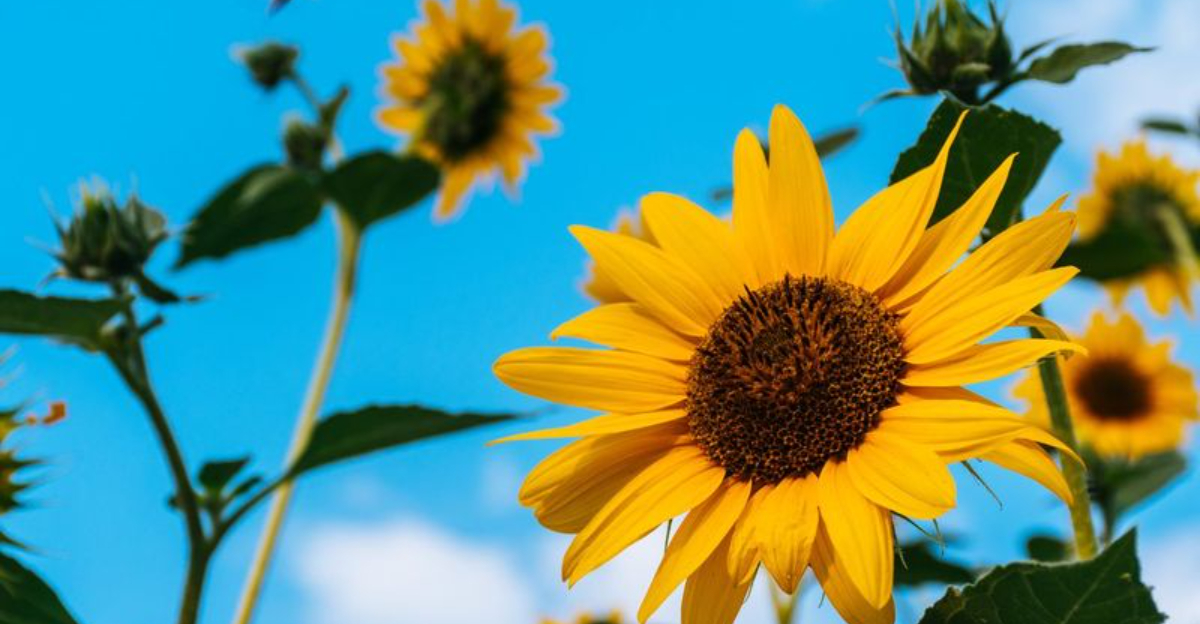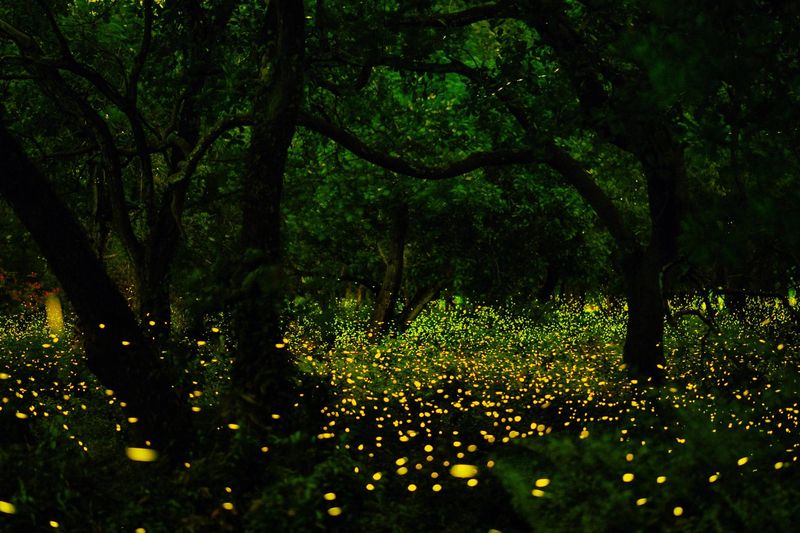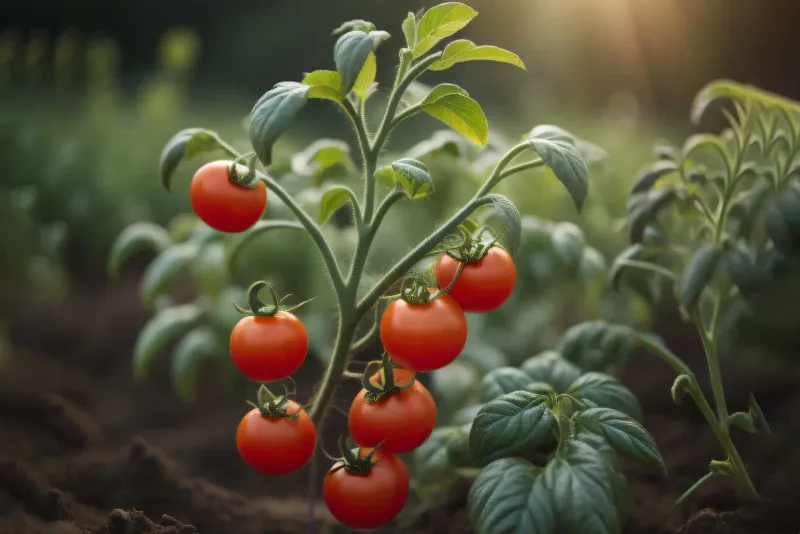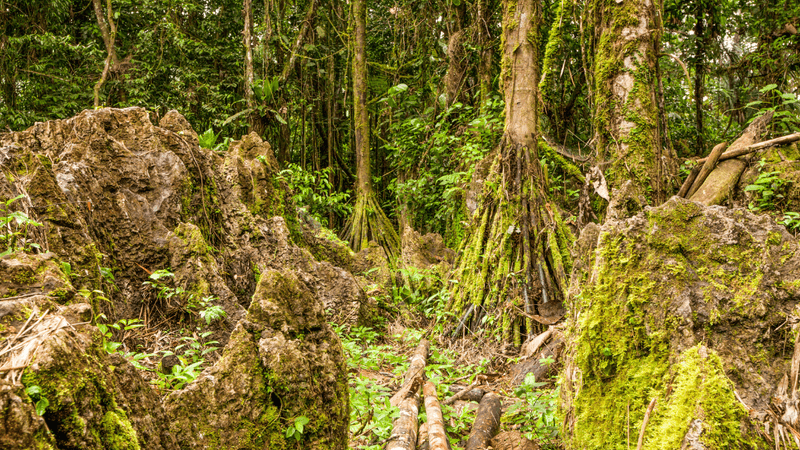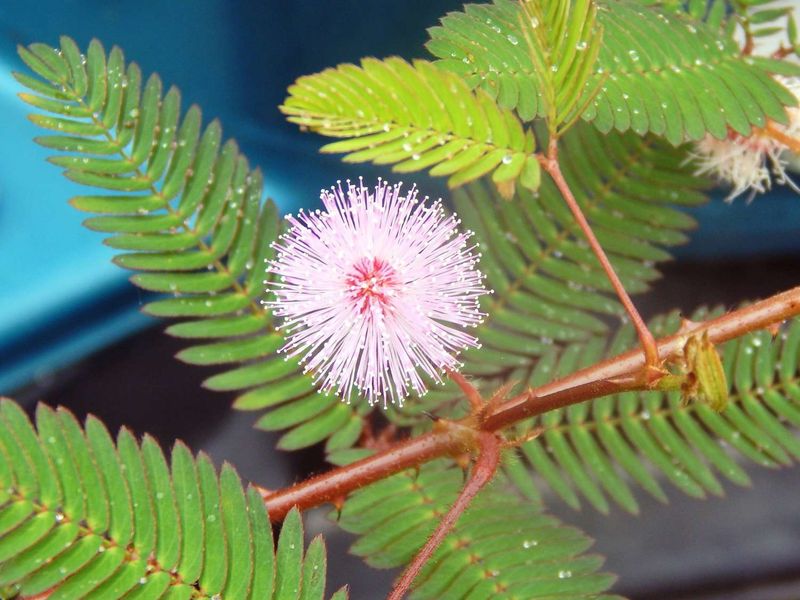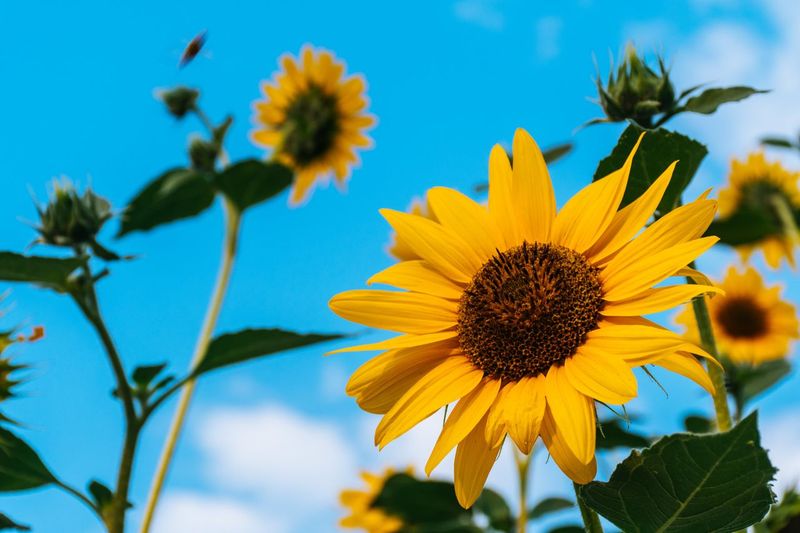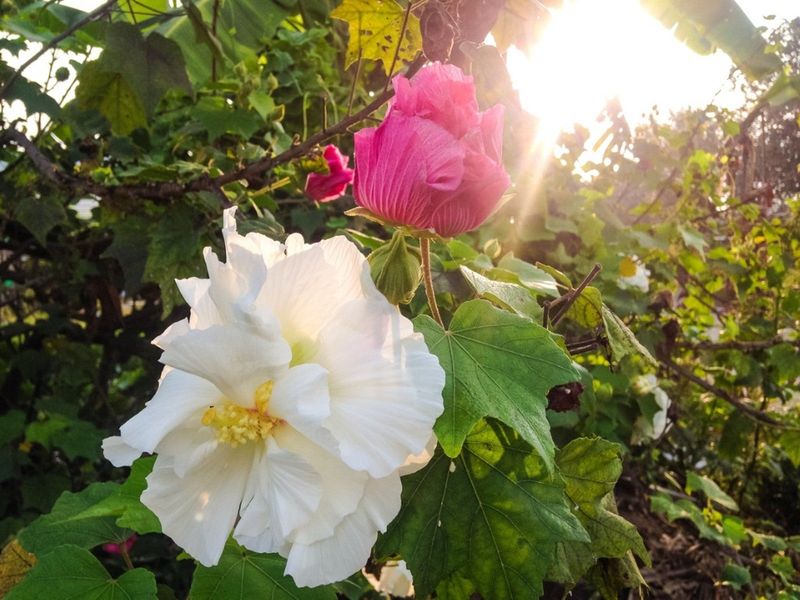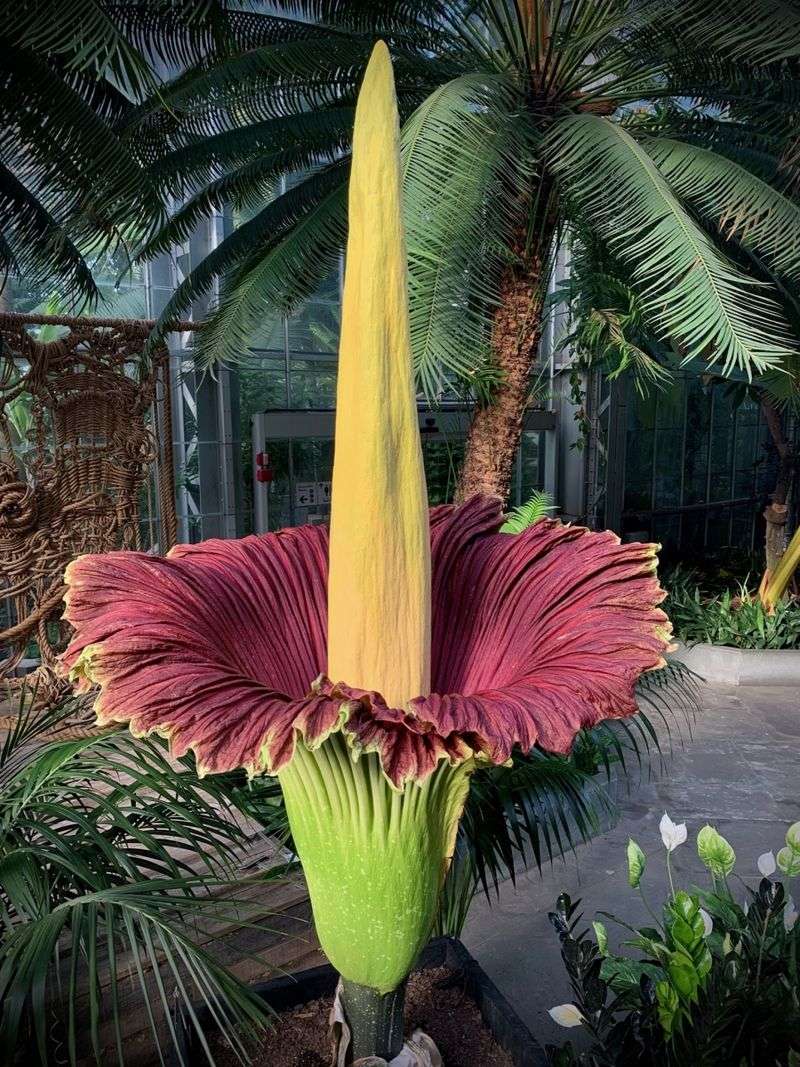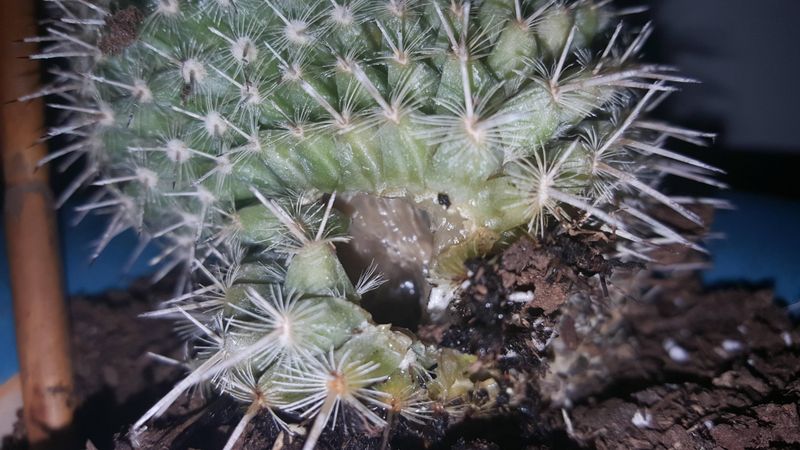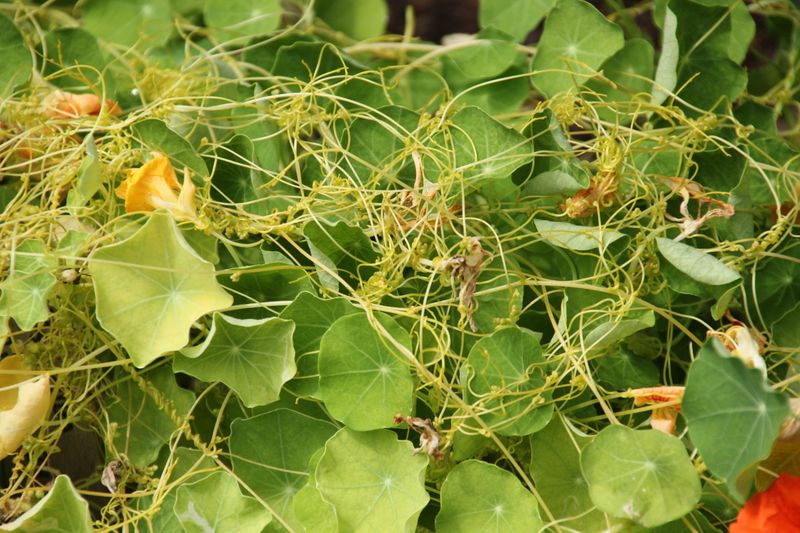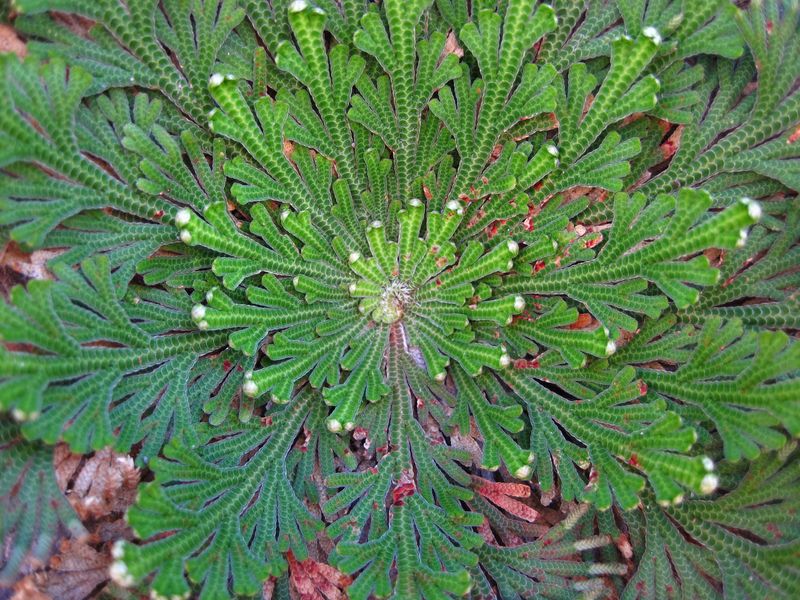Gardening is full of surprises, and some plants have abilities that stretch the imagination.
From glowing in the dark to mimicking the art of walking, these plants showcase the wonders of nature in the most extraordinary ways.
Let’s explore 10 unbelievable plant facts that will transform the way you see the plant kingdom!
1. Some Plants Glow in the Dark!
Certain fungi and plants, such as foxfire fungi and bioluminescent algae, have an enchanting glow in low light. This natural phenomenon, known as bioluminescence, occurs when specific chemical reactions emit light. The glow serves various purposes, from attracting pollinators to deterring predators.
Foxfire fungi, found in decaying wood, create a surreal nighttime spectacle. Bioluminescent algae, often seen in coastal waters, light up the ocean waves, mesmerizing onlookers. This shimmering glow not only captivates humans but also plays a crucial role in the ecosystem. Imagine a nighttime garden glowing with these magical organisms!
These plants seem almost otherworldly, adding a touch of magic to the natural world.
2. Tomato Plants “Scream” When Stressed!
Research reveals that tomato plants emit ultrasonic distress signals when they experience stress, like cutting or dehydration, although these sounds are inaudible to the human ear. Special equipment can detect these ultrasonic cries, indicating plants’ ability to communicate distress.
The concept of “screaming” plants might sound whimsical, but it highlights their complex response to environmental changes. These signals potentially alert nearby plants, offering insights into plant communication.
Understanding these sounds can lead to improved agricultural practices, ensuring healthier crops and more sustainable farming. It’s a fascinating glimpse into the secret lives of plants and their survival mechanisms.
3. Walking Palm Trees Exist!
The Socratea exorrhiza, also known as the walking palm tree, is native to the Amazon rainforest and has a unique ability to “walk.” It grows new roots towards sunlight, enabling it to shift over time, giving the illusion of movement.
This fascinating adaptation allows the tree to maximize its access to sunlight, crucial for photosynthesis. Over many years, these palms can move several meters, showcasing nature’s ingenuity in adapting to changing environments.
While they don’t walk in the traditional sense, their gradual shift is remarkable. Plant enthusiasts find this mobility intriguing, illustrating plant life’s dynamic nature.
4. Plants Can “Remember” and React!
The Mimosa pudica, or Sensitive Plant, is known for its ability to close its leaves when touched. This rapid response is a defense mechanism, deterring herbivores. Interestingly, Mimosa can remember repeated stimuli, exhibiting a form of plant memory.
Scientific studies show that after frequent harmless touches, the plant stops responding, indicating memory retention. This discovery challenges our understanding of plant intelligence and behavior.
The Sensitive Plant’s remarkable capabilities are a reminder of nature’s complexity. It captivates botanists and casual observers alike, inviting us to reconsider how we perceive plant life and its potential for adaptation.
5. Sunflowers Track the Sun Like a Compass!
Young sunflowers exhibit a fascinating behavior known as heliotropism, moving their heads to follow the sun’s path across the sky. This movement optimizes photosynthesis by maximizing sunlight exposure on their broad surfaces.
As sunflowers mature, their stems stiffen, and they face east permanently, but the young ones’ daily dance with the sun is truly captivating. This natural behavior not only supports growth but also attracts pollinators like bees, ensuring reproduction.
Heliotropism exemplifies the intricate relationships between plants and their environment, offering a beautiful dance that benefits the ecosystem and enchants gardeners.
6. Some Flowers Change Color to Attract Pollinators!
Certain flowers, like the hibiscus, can change color to attract pollinators, an intriguing adaptation to environmental and biological cues. As flowers age or become pollinated, they often shift hues to signal their status to pollinators.
This color transformation provides visual cues, optimizing pollination efficiency by guiding pollinators like bees. It’s a dynamic communication strategy between plants and insects, ensuring successful reproduction.
The color-changing ability of flowers is a testament to nature’s resourcefulness, inviting us to explore these subtle yet effective adaptations that facilitate life’s continuity in the plant world.
7. There’s a “Corpse Flower” That Smells Like Rotting Flesh!
The Titan Arum, or “Corpse Flower,” is famous for its putrid smell resembling rotting flesh. This odor attracts pollinators such as carrion beetles and flies, which are lured by the scent of decaying matter.
Blooming rarely, the Corpse Flower’s massive inflorescence and unique scent create a sensational attraction for visitors and scientists. Its ability to mimic the smell of death serves a vital role in its reproductive cycle, ensuring pollination success.
This extraordinary relationship between scent and survival highlights nature’s ingenuity. Though unpleasant, the Corpse Flower’s bloom is a testament to evolution’s creative solutions.
8. Cacti Can Explode Under the Right Conditions!
Cacti, adapted to arid conditions, can explode when they absorb too much water too quickly after rain. Their internal pressure builds rapidly, causing them to burst—a dramatic response to sudden hydration.
This explosive phenomenon highlights the delicate balance cacti maintain to survive harsh environments. Understanding this process offers insights into plant adaptation and resilience.
For desert gardeners, managing water intake is crucial to prevent such explosive outcomes. It’s a vivid reminder of the forces within nature and the importance of moderation even in seemingly simple plants like cacti.
9. A Type of Wildflower Can Steal Other Plants’ Genes!
The parasitic plant Dodder can absorb genetic material from its host plants, a rare and fascinating phenomenon in the botanical world. This gene theft provides Dodder with advantages, enhancing its survival and adaptability.
By integrating host genes, Dodder may manipulate host functions, gaining access to resources and circumventing defenses. This genetic interaction represents a complex strategy of parasitism, showcasing evolutionary innovation.
The study of Dodder’s genetic capabilities inspires new perspectives on plant interactions and evolution. Gardeners might find this wildflower’s adaptability both intriguing and challenging in their horticultural efforts.
10. Some Plants Can “Play Dead” to Survive!
Resurrection plants, like Selaginella lepidophylla, have the remarkable ability to survive extreme dehydration by appearing dead and reviving with water. This ability to “play dead” ensures survival in arid conditions.
When moisture returns, these plants unfurl and restore their green vitality, defying the odds in harsh environments. Their resilience is a source of fascination, symbolizing hope and renewal.
For gardeners, the resurrection plant offers a lesson in patience and adaptability, thriving in conditions where many others fail. It’s a living testament to life’s tenacity and the enduring power of nature’s survival strategies.
